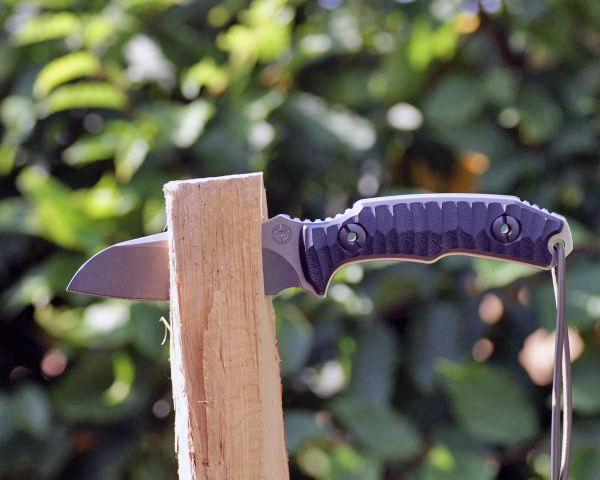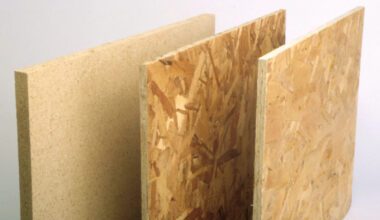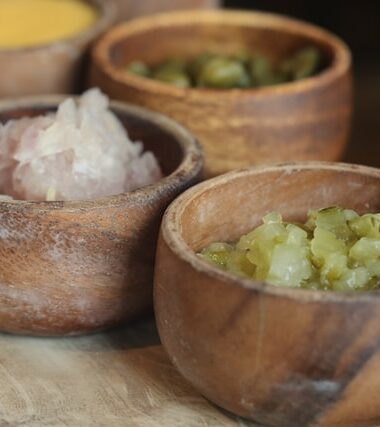Batoning is a technique of splitting wood with a knife or other sharp tools. This particular technique involves breaking wood into pieces with a knife by hitting it or hammering it repeatedly with another piece of wood. Knowing the survival technique of batoning can be extremely helpful for those who are fond of camping or going on an adventure.
Batoning firewood has been practiced for centuries. The main objective behind knowing how to baton wood is to be able to split a piece of wood when required. It can help expose the dry wood inside the wet wooden logs for easier kindling. This age-old technique for splitting wood is a popular way of using firewood worldwide.
When mother nature throws bad weather in front of you and you need to spend a night in the open, the knowledge of how to baton wood can be a lifesaver. Wondering why not use an axe or hatchet for the purpose? Simple, you may not have one handy when you require them as they are more cumbersome to carry.
Mastering the technique of batoning wood comes to the rescue when you need to light a fire in the middle of rain, snow, or a cool night when dry, small twigs are scarce. Splitting wood into pieces makes it easier to light up and create a fire.
The best part is, batoning wood does not involve any machinery or supplies. A sturdy knife capable of taking some harsh beating is all that you require along with knowing the right way to baton wood. The knife should have at least four to five inches long blade. A cheap flimsy knife is not suitable for this so if there are any chances that you might face such a situation, always carry a good-quality, sharp, sturdy knife in your backpack. Also remember, most folding knives have short blades and may not be ideal for batoning.

What are the advantages of batoning?
Not only can you achieve small wood pieces for lighting a fire by batoning wood but this technique is also used for getting small wood pieces for wood carving projects. Some people also use batoning techniques for making shingles, slats, and small boards. The wood splitting method also comes in handy for cutting notches and making cross cuts against the wood grain.
Batoning is an easier way of splitting woods that are full of knots and are difficult to hit with an axe. Wood pieces that are too rough may often bounce the axe head when hit hard. But knowing the right way how to baton wood can make the job easier in such cases.
Batoning in most cases makes the wood splitting process easier and faster than chopping wood with an axe. This technique of splitting wood by lodging a knife and hitting it with something heavy like a baton-like object can be done even by less experienced people. Batoning produces wood pieces with cleaner cuts than chopped wood. Batoning requires just a good knife and no heavy chopper or axe that may be difficult to maneuver.

The Batoning Process
Batoning is a simple bushcraft skill that does not require any complicated machinery or any power source.

Tools you will need
- A knife with a strong, long, straight blade
- Heavy wood for striking (baton)
- Gloves (if handy)
How to baton wood
Step – 1

The most important step in batoning wood is to choose the right knife. Without the right equipment, the purpose is lost! Before you lodge the knife into the wood and strike it for splitting, make sure your knife is straight. In case it is crooked, the knife may get damaged. A fixed blade knife is always a better option than a folding knife that usually has a smaller blade.
Step – 2

Select a baton or a log that’s comfortable to hold. You are getting ready for a lot of batoning or hammering and don’t want to injure your hands and wrist or get nasty blisters. Take your time, look around and choose the baton that will provide the force but will be gentle on your hands.
Step – 3

If you have a comfortable pair of gloves that are not slippery, wear them before batoning to protect your hands. Be careful while batoning, hold the baton with a tight grip. Do not allow it to slip out of your hands or it may cause injuries.
Step – 4

Place the knife close to the edge of the piece of wood that needs to be split. This will make breaking it easy and get kindling for the campfire. Position the knife straight down and hold it firmly. Do not lodge it at an angle to avoid breakage when getting ready to baton.
Step – 5

Hit the center or the spine of the knife with the baton. The knife will get properly lodged in the wood after a few hammering. Next, baton on the blade end of the knife avoiding the tip of the blade. As the tip of the blade is usually weaker, it may not be able to bear the batoning and may break.
Step- 6

Keep batoning till the metal blade of the knife penetrates far enough so that you can hit a part of the spine steadily. Repeat the batoning process and then readjust the knife. Correct the orientation of the blade and place it straight as done before. Baton with medium strength and keep correcting the position of the blade as and when it strays from its position. Keep repeating the process till the piece of wood breaks.

Things to remember while batoning wood
- While batoning never hit the handle as hard as the blade or it may break.
- Try batoning a different piece of wood if a particular piece is stubborn and giving trouble
- Not every knife is ideal for batoning. Strong, sharp, fixed blade camping knives are better for batoning.
- The ease of batoning depends greatly on the type of wood that you want to split. While pine is soft and easy to split, sycamore.
- Always baton in the direction of the grain of the wood, never against it.
- Straight grain, thin wood pieces are easy to baton. So choose wisely when batoning wood.
- Hammer a bit slower when you reach towards the end of the wood that you are splitting.
- A sharp knife makes the wood batoning job a lot easier and smoother.
If you plan to go camping, make sure you sharpen a strong knife and carry it along to have a good batoning experience when you need it!







